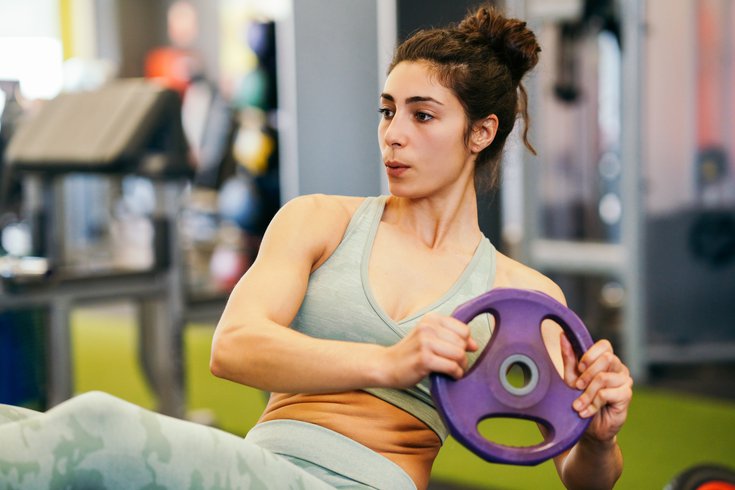
April 28, 2021
 Source/Image licensed from Ingram Image
Source/Image licensed from Ingram Image
In general, pyramid workouts consist of a given number of exercises and you start at the bottom, with the highest amount of reps, and work your way to the top, with the least amount of reps.
Do you ever walk into the gym and look around at all the weights and machines and think "how am I possibly going to put together a workout?"
Programming workouts is literally my job and I still have days when I'm at a loss in the gym with the overwhelming amount of ways to put together a workout. I typically keep my workouts somewhat boring and basic. A typical workout program will consist of 4-5 groups of exercises. Each group will consist of 2-3 sets of exercises, with each set being performed 3-4 times. It is simple, yet effective, and allows me to train with purpose without having to think too much while planning my workouts.
With that being said, everyone gets bored sometimes in the gym, especially trainers! The gym is a second home to me, and I spend my time constantly programming for clients and myself, so every now and then the workout I have planned just doesn't excite me.
Enter pyramid workouts.
One of my absolute favorite things when training is when I tell a client that we have a pyramid on the agenda. I will usually receive an eye roll or a groan in response. Pyramids are tough.
In general, pyramids consist of a given number of exercises, say five, and you start at the bottom, with the highest amount of reps, and work your way to the top, with the least amount of reps. Or you can start at the top and go in the reverse. Think about an actual pyramid, the top is the most narrow whereas the bottom gets bigger. The same goes for an exercise pyramid.
There are a few ways to get through pyramid workouts and each version has its own way of crushing you. My favorite type of pyramid is the simplest option. We'll start with five exercises (this number can change depending on how many exercises you want to include) and start at the bottom of the pyramid with 10 reps of each exercise (again this number can change depending on how many reps you want to get through). You will complete each exercise 10 times and then the next round you will decrease the reps by one. So, the second round will consist of nine reps of each exercise, and you work your way down to one rep of each exercise.
I stick to this type of pyramid because it's a simple, yet effective, way to get in a ton of reps. When I'm short on time and don't have the ability to leisurely get through a workout, I will choose to do a pyramid instead. Thirty minutes later, my muscles are shaking and my heart is racing and I have completed upwards of 50 reps of several exercises.
If you really want to push yourself, start at the top of the pyramid and work your way down. I'm not usually this mean when it comes to training my clients, but there's nothing like knowing each round will get harder and longer to keep you motivated to complete the pyramid as fast as possible.
Another more complex way to perform a pyramid is to add weight as you decrease the rep count and vice versa. Starting at the bottom of the pyramid, with the highest rep count, you would start with light weights so you are able to perform all 10-15 reps. As you decrease the rep count, you increase the weight, thus making each round shorter but harder. As mentioned above, you always have the option to start at the top of the pyramid with the lowest amount of reps but the heaviest weights. Whichever direction you start with, weights and reps count should be inversely related.
It's always fun to get creative with your workouts and keep your body on edge with something different. Throw in a pyramid like this one for a killer workout.
Gabby Drucker owns Drucker Fitness, a Philadelphia-based personal training studio and online training business. She is a Certified Strength and Conditioning Specialist (CSCS) and a Pre and Postnatal Certified Trainer. Follow her on Instagram at @druckerfitness or visit druckerfitness.com.